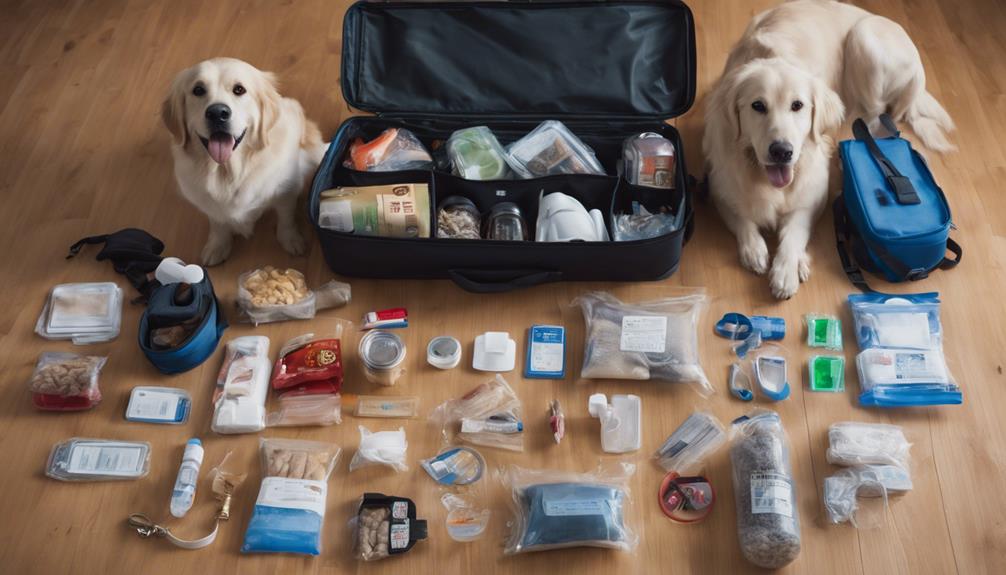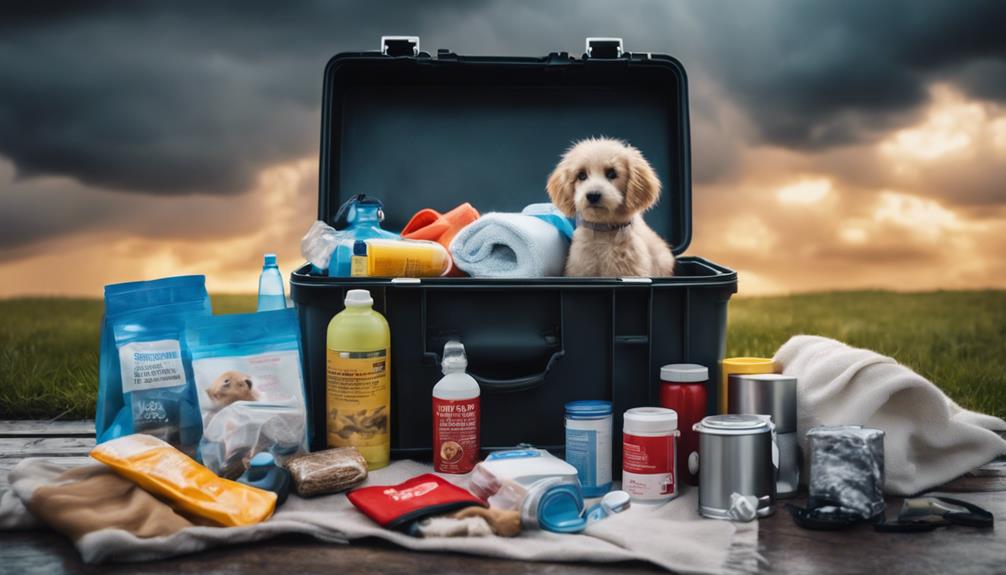In the face of natural disasters, pet owners are confronted with critical decisions regarding the safety and care of their animal companions. The responsibility of safeguarding pets during emergencies necessitates a thoughtful and strategic approach, one that encompasses preparation, swift action, and unwavering dedication.
As the unpredictable nature of such events underscores the urgency of establishing clear protocols and plans for pet evacuation and protection, the guidance provided in this discussion offers invaluable insights into navigating the challenges posed by disasters.
By prioritizing the well-being of pets through proactive measures and informed decision-making, pet owners can ensure a resilient response to crisis situations and uphold the bond they share with their beloved animals.
Key Takeaways
- Never leave your pet behind; evacuate with them to safety.
- Prepare a pet emergency kit with essentials and comfort items.
- Practice evacuation plans and know pet-friendly shelters.
- Monitor your pet post-disaster, allowing time to adjust.
Evacuation and Shelter Plans
Ensuring the safety of your pet during a natural disaster begins with meticulous planning and the establishment of comprehensive evacuation and sheltering strategies. When disaster strikes, never leave your pet behind during an evacuation. Have a shelter-in-place plan if staying, ensuring you know where you and your pet will be safest. Leaving pets behind can result in prolonged separation and potential danger.
It's crucial to plan ahead, identifying pet-friendly shelters or accommodations in advance. Practice evacuating or seeking shelter with your pet, familiarizing them with carriers and evacuation routines. Knowing your pet's hiding spots and training them to enter carriers calmly can streamline the evacuation process, keeping both you and your pet safe during emergencies.
Pet Emergency Kit Essentials
One essential component for pet safety during a natural disaster is a well-prepared pet emergency kit. This kit should include essential items such as leashes, carriers, food, water, bowls, and any necessary medications for your pet.
It is crucial to keep medical and vaccination records, as well as microchip information, updated and readily accessible in case of separation. Additionally, packing comfort items like toys or blankets can help reduce stress for your pet during challenging times.
Having these supplies organized and easily accessible can make a significant difference in ensuring your pet's safety and well-being during an emergency situation.
Practice and Preparedness Tips

To enhance pet safety and readiness during a natural disaster, thorough practice and preparedness are essential components. It is crucial to ensure that both you and your pet are well-prepared for any potential emergency situation. Here are some key tips to help you and your pet be better prepared:
- Practice evacuating or seeking shelter with your pet.
- Know your pet's hiding spots and evacuation techniques.
- Train pets to enter carriers calmly.
Returning Home After a Disaster
Upon returning home after a disaster, pet owners should exercise caution and attentiveness to ensure their pets' safety and well-being in the altered environment. Expect potential damage to your home post-disaster, and allow your pet time to adjust to changes within the house.
Monitor pets closely if fences or gates are damaged, as they may attempt to escape or explore unfamiliar territory. Seek veterinary advice for any changes in pet behavior, as stress and anxiety levels may be heightened after the traumatic event.
Be patient as your pet acclimates to the new surroundings, offering comfort and reassurance during this transitional period. By being vigilant and responsive to your pet's needs, you can help them readjust and feel secure in their home once again.
Additional Resources and Recommendations

After addressing the considerations for returning home post-disaster, pet owners can benefit from exploring additional resources and recommendations to further ensure the safety and well-being of their pets in the aftermath.
- Pet Microchipping: Ensure your pet has a microchip with updated information to increase the chances of being reunited if separated.
- Emergency Contact List: Create a list of emergency contacts including veterinarians, local animal shelters, and pet-friendly hotels.
- Pet First Aid Training: Consider taking a pet first aid course to be prepared for any injuries or medical emergencies your pet may encounter.
Supporting Pets in Need
In times of crisis, extending a helping hand to pets in need is a crucial aspect of post-disaster recovery efforts. Providing support to animals affected by natural disasters can make a significant difference in their well-being and chances of survival. Here are some ways you can assist pets in need:
| Ways to Support Pets in Need | Description |
|---|---|
| Donate to Animal Shelters | Financial contributions help provide care and supplies for displaced pets. |
| Volunteer at Rescue Centers | Offer your time and skills to assist in caring for and reuniting pets with their owners. |
| Foster a Displaced Pet | Provide temporary homes for pets until they can be reunited with their families. |
Conclusion
In conclusion, ensuring the safety and well-being of pets during natural disasters is crucial. By following evacuation plans, preparing an emergency kit, and practicing response protocols, pet owners can protect their furry companions in times of crisis.
Returning home after a disaster and supporting pets in need are vital components of effective disaster management. Stay informed, stay prepared, and prioritize the safety of pets to minimize the impact of unforeseen emergencies.




